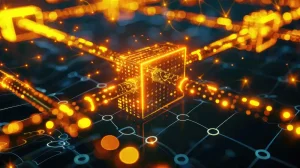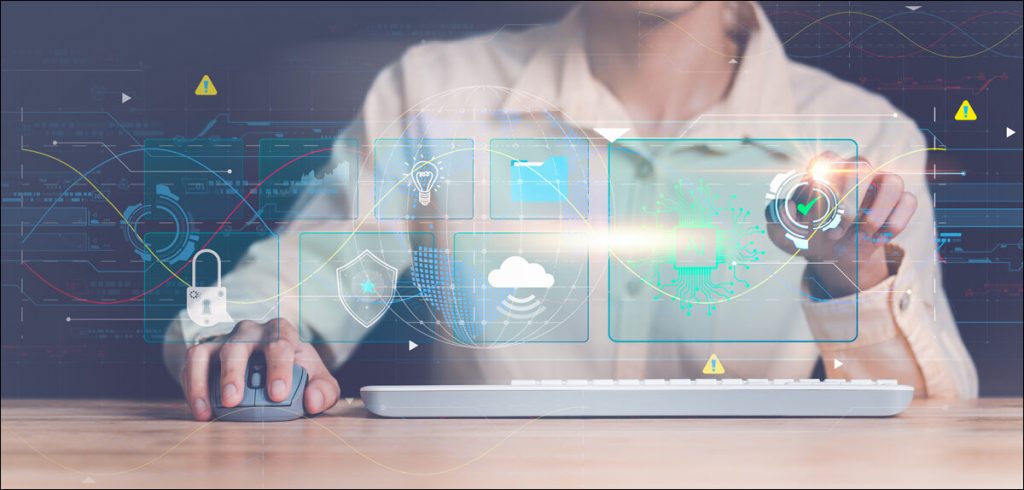With AI handling all the heavy lifting with the automated responses and continuous monitoring, it allows human experts to focus on fine-tuning security measures and strategic decision-making.
Cybersecurity and AI (artificial intelligence) have been inextricably linked for years now. While the bad guys use AI to find and create security gaps, the good guys use AI to analyse incoming data and help block malicious activity. Clearly, IT has always been an arms race, and AI has contributed greatly to this ever-escalating scene, bringing a new class of arms for deployment and defence. So, how soon will it be before AI-powered protection also becomes ready for deployment? We are talking about an AI firewall, an NGFW (next-generation firewall) product that employs intelligent detection technologies to improve the capability of detecting unknown and advanced threats. They are posed to be the next revolutionary phase of the firewall and are fast becoming essential tools to protect sensitive information from cyber threats. This article delves into the world of AI firewalls, why they are important, and how they enhance data security and protect it.

What are AI-powered firewalls?
AI-powered firewalls are a new frontier in AI-powered cybersecurity. They blend traditional firewall systems and AI to boost response capabilities and threat detection significantly. These firewalls go beyond static rules, leveraging real-time monitoring and machine learning algorithms to scan and analyse network traffic and spot and weed out potential security threats before they become an issue. AI-powered firewalls can identify anomalies and patterns by analysing huge amounts of data at lightning speeds, thus helping indicate possible cyber threats. So, they do not simply react to known threats but also adapt to new and evolving ones, thus offering proactive protection. It is this particular adaptability that is crucial in today’s rapidly evolving cyber landscape.

The Importance of AI Firewalls
Traditional firewalls are struggling to keep up with cyber threats that are becoming more sophisticated day by day. This is where AI firewalls come in, providing advanced capabilities, and addressing these evolving risks. Basically, AI firewalls have an important two-pronged approach to mitigating cybersecurity risks and indulging in real-time threat detection and response. They leverage real-time and machine learning analytics and adapt and respond to threats in real time. In fact, according to a HAL Open Science Study, AI-based firewall methods have near-perfect detection accuracy, with some of them having detection rates as high as 95%. And since they boast real-time response, any and all suspicious activities are quickly identified and addressed.

How AI Firewalls Enhance Data Security
- Ensuring advanced threat detection: AI firewalls use advanced algorithms to quickly identify and neutralise a whole wide range of cyber threats. By analysing network traffic, they detect ransomware, malware, and a whole spectrum of elusive APTs (advanced persistent threats) that could pose possible existential risks. They analyse network patterns and uncover potential breaches and anomalies, ensuring not just comprehensive but also proactive protection against emerging threats.
- Analysing real-time traffic: Through real-time analysis and monitoring, AI firewalls ensure proactive defence. They continuously scan network traffic and activity, swiftly identifying, intercepting, and addressing any anomalies or threats right when they occur. So, they help in stopping these threats before they gain any traction. Their sophisticated algorithms ensure detection and response to potential threats before they escalate.
- Using automated response mechanisms: Using automated response mechanisms, AI firewalls can make quick and decisive responses. They can block malicious traffic, enact security protocols, and isolate devices that have been compromised with surgical precision. Thus, they greatly help in mitigating cyber security risks and even minimise response times, thus greatly reducing the burden on human operators. Moreover, they also bolster defences against any unauthorised attempts to access an organization’s network, thus ensuring data confidentiality and integrity. All these actions go a long way in protecting sensitive data and infrastructure from malevolent threats and activities.

- Ensuring adaptive learning: Even after they have been deployed, AI systems are designed to continually keep learning and evolving. This ongoing training allows AI-powered firewalls to constantly evolve and learn how to detect the latest threats, thus making them largely better than legitimate traffic.
- Ensuring regulatory compliance: Finally, AI-powered firewalls can greatly help in simplifying regulatory compliance by lessening the number of reportable security incidents that an organization could possibly suffer. Moreover, AI firewalls provide better security visibility and auditing, thus reducing the complexity of regulatory reporting.
With most cybersecurity trends hailing AI and machine learning as one of the top trends in the coming years, it’s not surprising that the size of the NGFW market is expected to reach USD 11.89 billion by 2032. AI firewalls have shown remarkably high robustness and scalability against adversarial attacks, thus making them invaluable in today’s threat landscape. Moreover, the fact is that they will not and cannot replace humans; they are here to complement them. With AI handling all the heavy lifting with the automated responses and continuous monitoring, it allows human experts to focus on fine-tuning security measures and strategic decision-making. In the end, it is the partnership combining the best of both worlds that ensures comprehensive defence against cyber threats.
In case you missed:
- How AI Can Fortify Cryptocurrency Security
- Decoding Backdoor Attacks in Cybersecurity
- Zero Trust Architecture: The Next Big Thing In Security
- The Very First AI-Powered Ransomware Is Here. What Does It Mean For Cybersecurity?
- The Good Samaritan: A Complete Guide To Ethical Hacking
- Constant Vigilance: Why Cyber Hygiene And Digital Self-Care Are Important
- Can AI Modernise Legacy Systems?
- The Future of Wearable Tech in Personalised Care
- How AI Can Transform Disaster Management
- The AI Surveillance Society: Is It Necessary or Have We Gone Too Far?










